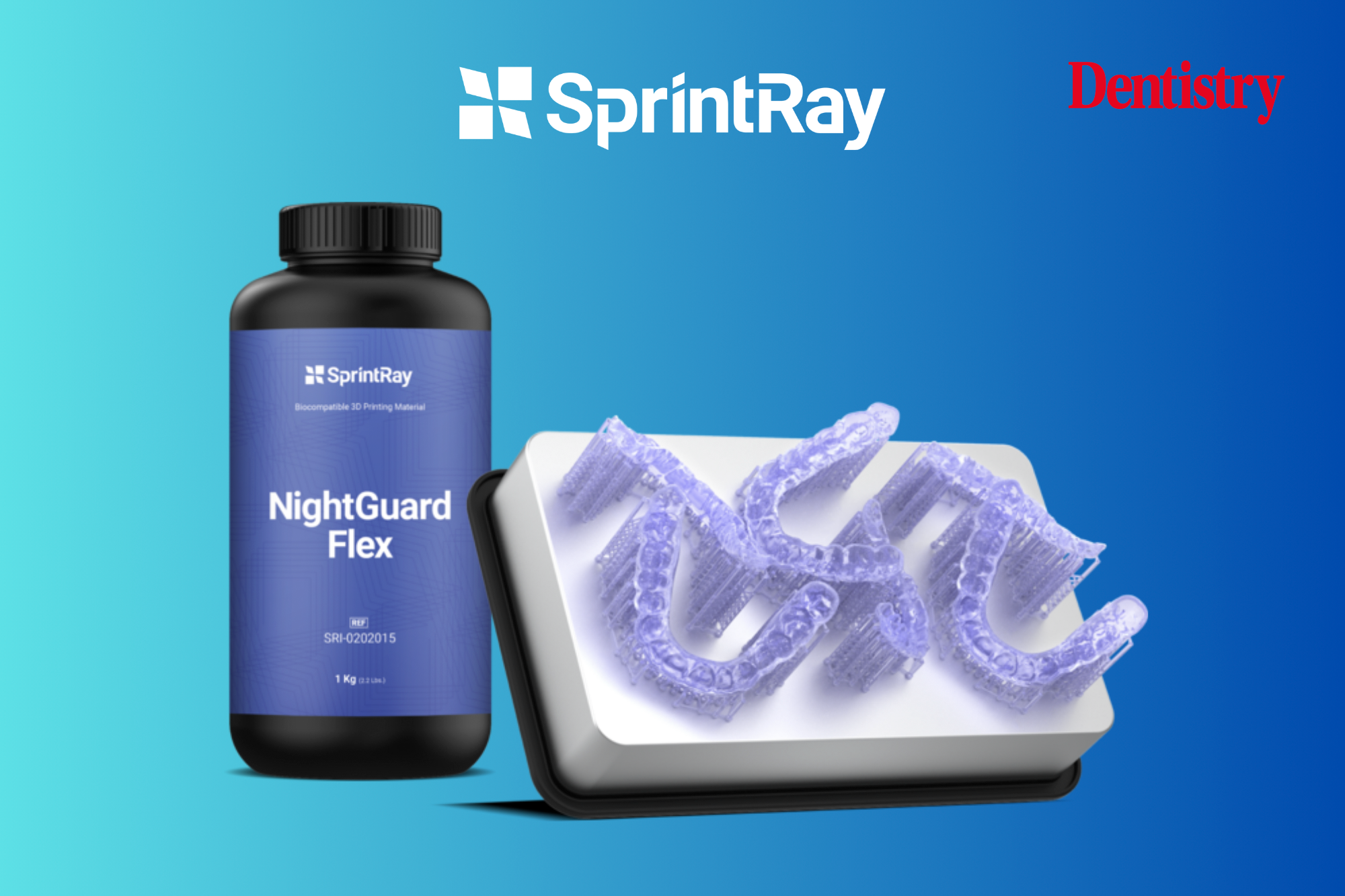 Night guard manufacture can now be carried out through 3D printing – what impact does this have on the workflow?
Night guard manufacture can now be carried out through 3D printing – what impact does this have on the workflow?
Night guards are dental appliances designed to protect teeth and restorations from damage caused by bruxism, or teeth grinding. They are typically made of hard or soft acrylic and are custom fitted to a patient’s teeth.
Traditionally, manufacturing night guards involved taking impressions of the patient’s teeth and sending them to a dental laboratory for fabrication. This process can take several days, if not weeks, to complete.
However, thanks to advancements in technology, night guards can now be produced in a matter of hours using 3D printing.
3D printing
3D printing is a process that involves the layer-by-layer construction of a three-dimensional object based on a digital model. This technology has been used in various industries, including aerospace, automotive, and healthcare.
In recent years, 3D printing has gained popularity in dentistry due to its accuracy, efficiency, and cost-effectiveness.
One of the leading manufacturers of 3D printers for dental applications is SprintRay. SprintRay’s 3D printers are designed specifically for dental professionals and offer a range of features that make them ideal for manufacturing night guards.
These features include a large build platform, high-resolution digital light processing projector, and a user-friendly interface.
The right material is also important. SprintRay has developed their own night guard flex resin that will be available in Europe from May 2023.
The night guard manufacture process
The process of manufacturing a night guard using a SprintRay 3D printer begins with taking a digital impression of the patient’s teeth using an intraoral scanner. The digital impression is then used to create a 3D model of the patient’s teeth, which can be modified using CAD software. The CAD file is then uploaded to the SprintRay software, where it is prepared for printing.
SprintRay’s proprietary software, RayWare, offers a range of tools for preparing the 3D model for printing. These tools include automatic support generation, which ensures that the model is stable during printing, and customisable orientation, which allows the user to position the model on the build platform for optimal printing.
Once the model has been prepared, it is sent to the SprintRay 3D printer for fabrication. SprintRay offers two 3D printers for dental applications, the Pro 95 S and the Pro 55 S. Both printers can produce high-quality night guards.
The SprintRay 3D printer uses a technology called DLP (digital light processing) to create the night guards. This process involves shining a high-intensity light onto a vat of liquid resin, which hardens and forms the desired shape. The printer repeats this process layer by layer until the entire night guard has been printed.
Once the night guard has been printed, it is removed from the build platform and cleaned using SprintRay’s Pro Wash/Dry. The Pro Wash/Dry removes any excess resin and prepares the night guard for curing. The cured night guard is then ready for use and can be adjusted to ensure a proper fit.
Advantages of using a SprintRay 3D printer
One of the biggest advantages of using a SprintRay 3D printer for manufacturing night guards is the speed at which they can be produced. The large build platform and high-resolution projector allow for nearly a dozen night guards to be printed per hour when the build platform is oriented horizontally.
Even when printing only one or two guards at a time, the entire process can be completed within a few hours, allowing for same-day or next-day delivery to patients.
In addition to being fast, 3D printing offers several other benefits over traditional night guards manufacturing methods. One of the biggest advantages is cost-effectiveness. Traditional methods of manufacturing night guards require the use of expensive materials and labor-intensive processes. 3D printing, on the other hand, uses relatively inexpensive resin and requires minimal labor.
With this technology, patients can receive high quality and cost effective night guards very fast. SprintRay’s 3D printing workflow system includes the RayWare Software, the Pro95 S or Pro55 S 3D Printer (Ideal is to have both S Printers, especially if the dental user wants to print crowns with the new Crown Kit from SprintRay), the Pro Wash/Dry and the ProCure 2.
SprintRay’s 3D printing workflow system is not only extremely fast, it is supported by brand ambassador Usain Bolt, fastest man on earth.
Are you ready for the next 100 years of dentistry?
If you want to receive a sample, click here.


